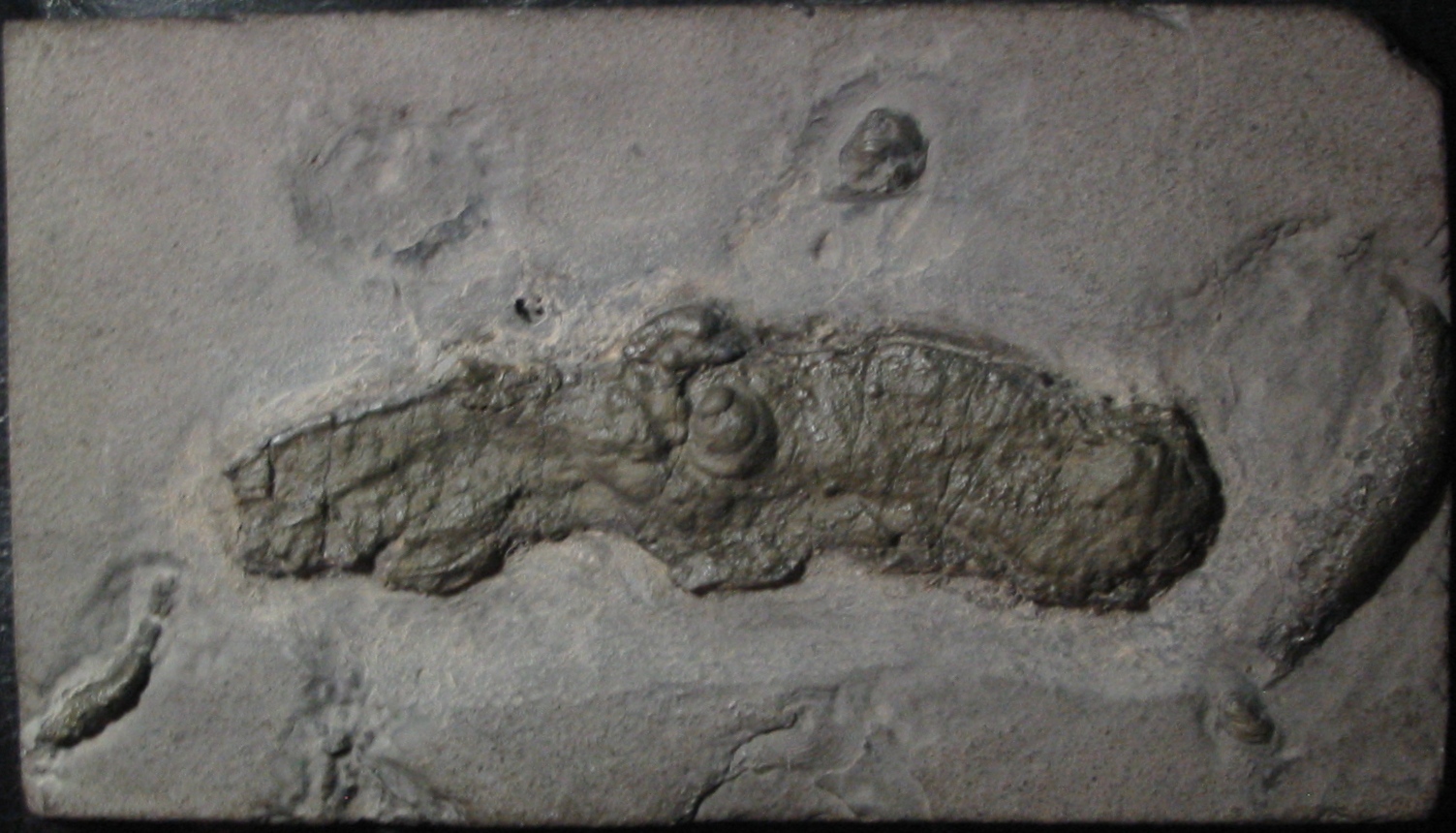La Voulte-sur-Rhône (lagerstätte) on:
[Wikipedia]
[Google]
[Amazon]
 The late Middle Jurassic lagerstätte at La Voulte-sur-Rhône, in the
The late Middle Jurassic lagerstätte at La Voulte-sur-Rhône, in the
Ardèche
Ardèche (; oc, Ardecha; frp, Ardecha) is a department in the Auvergne-Rhône-Alpes region of Southeastern France. It is named after the river Ardèche and had a population of 328,278 as of 2019.France, offers paleontologists an outstanding view of an undisturbed paleoecosystem that was preserved in fine detail as organisms died at the site and settled to the bottom of a shallow
 Some soft parts of organisms are preserved as phosphatised concretions, in exceptional cases down to cellular details, ''e.g.'' retinal structures in the eyes of conchyliocarid crustacea. Apart
from Beecher's Trilobite Bed and the Hunsrück Slate, La Voulte-sur-Rhône is the only other locality where extensive pyritization of soft parts occurs. see page 41
However, pyritisation is not the only preservation pathway; several stages of mineralization (originally phosphate followed by calcite or gypsum, then pyrite and finally galena) are seen, each successive mineralization event degrades the detail preserved, with only gross morphological features preserved in the most advanced stages.
Some soft parts of organisms are preserved as phosphatised concretions, in exceptional cases down to cellular details, ''e.g.'' retinal structures in the eyes of conchyliocarid crustacea. Apart
from Beecher's Trilobite Bed and the Hunsrück Slate, La Voulte-sur-Rhône is the only other locality where extensive pyritization of soft parts occurs. see page 41
However, pyritisation is not the only preservation pathway; several stages of mineralization (originally phosphate followed by calcite or gypsum, then pyrite and finally galena) are seen, each successive mineralization event degrades the detail preserved, with only gross morphological features preserved in the most advanced stages. "La Voulte-sur-Rhone" by Sarah Joomun, Dept. of Earth Science, Bristol University
/ref>
epicontinental sea
An inland sea (also known as an epeiric sea or an epicontinental sea) is a continental body of water which is very large and is either completely surrounded by dry land or connected to an ocean by a river, strait, or "arm of the sea". An inland s ...
, with a folded floor that in places exceeded 200 m at this site. The site preserves a marine system of the Lower Callovian stage, a little over 160 mya. The sequence is exposed in a series of quarries at La Boissine, west of the village of La Voulte-sur-Rhône. Iron pyrites in the silty shale are symptoms of an anoxic environment. The site was recognized among French paleontologists from the mid-nineteenth century for its finely detailed fossils.
Preservation
 Some soft parts of organisms are preserved as phosphatised concretions, in exceptional cases down to cellular details, ''e.g.'' retinal structures in the eyes of conchyliocarid crustacea. Apart
from Beecher's Trilobite Bed and the Hunsrück Slate, La Voulte-sur-Rhône is the only other locality where extensive pyritization of soft parts occurs. see page 41
However, pyritisation is not the only preservation pathway; several stages of mineralization (originally phosphate followed by calcite or gypsum, then pyrite and finally galena) are seen, each successive mineralization event degrades the detail preserved, with only gross morphological features preserved in the most advanced stages.
Some soft parts of organisms are preserved as phosphatised concretions, in exceptional cases down to cellular details, ''e.g.'' retinal structures in the eyes of conchyliocarid crustacea. Apart
from Beecher's Trilobite Bed and the Hunsrück Slate, La Voulte-sur-Rhône is the only other locality where extensive pyritization of soft parts occurs. see page 41
However, pyritisation is not the only preservation pathway; several stages of mineralization (originally phosphate followed by calcite or gypsum, then pyrite and finally galena) are seen, each successive mineralization event degrades the detail preserved, with only gross morphological features preserved in the most advanced stages./ref>
Fauna and flora
The fauna preserved can be broadly divided into the ''allochthonous
River ecosystems are flowing waters that drain the landscape, and include the biotic (living) interactions amongst plants, animals and micro-organisms, as well as abiotic (nonliving) physical and chemical interactions of its many parts.Angelier ...
'' fauna (consisting of soft-bodied organisms which lived on the sea floor (benthic
The benthic zone is the ecological region at the lowest level of a body of water such as an ocean, lake, or stream, including the sediment surface and some sub-surface layers. The name comes from ancient Greek, βένθος (bénthos), meaning "t ...
) or swam freely just above it ( nektobenthic)) and the ''in-situ'' mortality horizon.
The allochthonous fauna contains rare and well-preserved organisms. Fossils of pycnogonid
Sea spiders are marine arthropods of the order Pantopoda ( ‘all feet’), belonging to the class Pycnogonida, hence they are also called pycnogonids (; named after ''Pycnogonum'', the type genus; with the suffix '). They are cosmopolitan, foun ...
s ("sea-spiders"), the first find in Mesozoic strata in an admittedly very patchy fossil record, were identified in 2007.
A coleoid cephalopod
A cephalopod is any member of the molluscan class Cephalopoda (Greek plural , ; "head-feet") such as a squid, octopus, cuttlefish, or nautilus. These exclusively marine animals are characterized by bilateral body symmetry, a prominent head ...
(a single specimen of a small octopus) was described from La Voulte-sur-Rhône in 1982. The marine crocodile '' Metriorhynchus'', fish, decapod, mysidReferences
{{DEFAULTSORT:La Voulte-sur-Rhone (lagerstatte) Jurassic System of Europe Callovian Stage Lagerstätten Paleontology in France